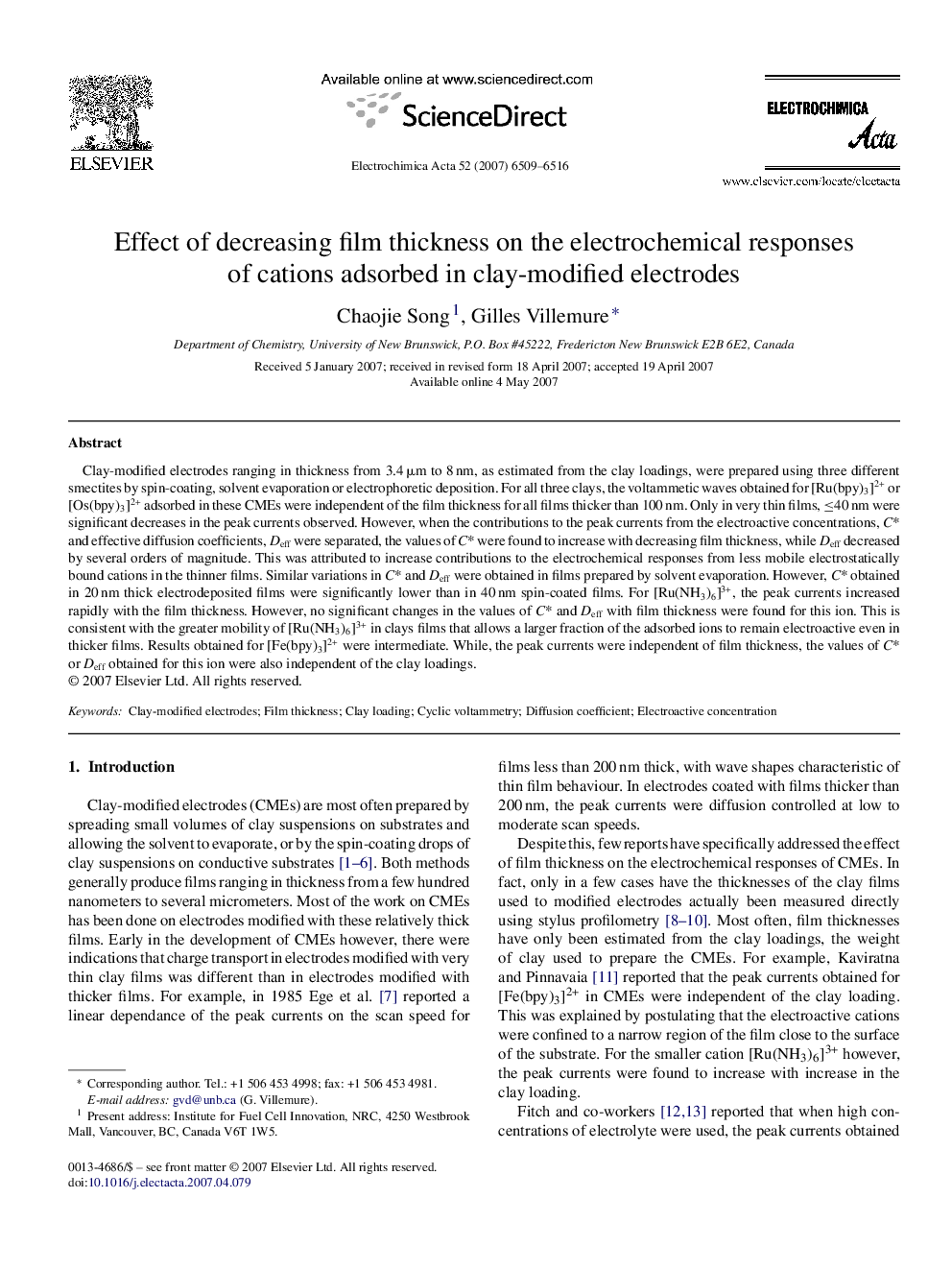| Article ID | Journal | Published Year | Pages | File Type |
|---|---|---|---|---|
| 194433 | Electrochimica Acta | 2007 | 8 Pages |
Clay-modified electrodes ranging in thickness from 3.4 μm to 8 nm, as estimated from the clay loadings, were prepared using three different smectites by spin-coating, solvent evaporation or electrophoretic deposition. For all three clays, the voltammetic waves obtained for [Ru(bpy)3]2+ or [Os(bpy)3]2+ adsorbed in these CMEs were independent of the film thickness for all films thicker than 100 nm. Only in very thin films, ≤40 nm were significant decreases in the peak currents observed. However, when the contributions to the peak currents from the electroactive concentrations, C* and effective diffusion coefficients, Deff were separated, the values of C* were found to increase with decreasing film thickness, while Deff decreased by several orders of magnitude. This was attributed to increase contributions to the electrochemical responses from less mobile electrostatically bound cations in the thinner films. Similar variations in C* and Deff were obtained in films prepared by solvent evaporation. However, C* obtained in 20 nm thick electrodeposited films were significantly lower than in 40 nm spin-coated films. For [Ru(NH3)6]3+, the peak currents increased rapidly with the film thickness. However, no significant changes in the values of C* and Deff with film thickness were found for this ion. This is consistent with the greater mobility of [Ru(NH3)6]3+ in clays films that allows a larger fraction of the adsorbed ions to remain electroactive even in thicker films. Results obtained for [Fe(bpy)3]2+ were intermediate. While, the peak currents were independent of film thickness, the values of C* or Deff obtained for this ion were also independent of the clay loadings.
